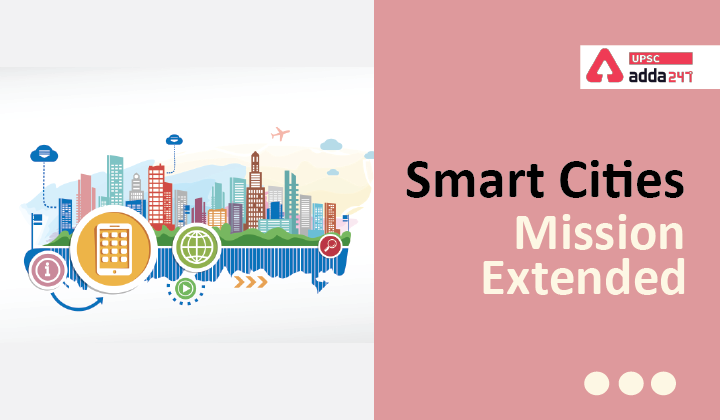Table of Contents
Smart Cities Mission: Relevance
- GS 3: Government policies and interventions for development in various sectors
Smart Cities Mission: Context
- The Ministry of Housing and Urban Affairs has informed that the Government has extended the timeline for the implementation of the Smart Cities Mission to June 2023.
Smart Cities Mission India: Key points
- The ministry has informed that the delay has been caused by the COVID-19 pandemic.
- The physical progress of Smart Cities programme, aimed at developing citizen-friendly and self-sustainable urban settlements, was earlier expected to be measurable only by 2021.
Smart Cities meaning
- Smart Cities focus on their most pressing needs and on the greatest opportunities to improve lives.
- They tap a range of approaches – digital and information technologies, urban planning best practices, public-private partnerships, and policy change – to make a difference.
- In the approach to the Smart Cities Mission, the objective is to promote cities that provide core infrastructure and give a decent quality of life to its citizens, a clean and sustainable environment and application of ‘Smart’ Solutions.
- The focus is on sustainable development and the idea is to look at compact areas, create a replicable model which will act like a light house to other aspiring cities.
What is Smart Cities Mission?
Vision
- The purpose of the Smart Cities Mission is to drive economic growth and improve the quality of life of people by enabling local area development and harnessing technology, especially technology that leads to Smart outcomes.
Smart Cities Mission strategy
- Pan-city initiative in which at least one Smart Solution is applied city-wide
- Develop areas step-by-step – three models of area-based developments
- Retrofitting,
- Redevelopment
Smart Cities Mission: The core infrastructure elements
- Adequate water supply,
- Assured electricity supply,
- Sanitation, including solid waste management,
- Efficient urban mobility and public transport,
- Affordable housing, especially for the poor,
- Robust IT connectivity and digitalization,
- Good governance, especially e-Governance and citizen participation,
- Sustainable environment,
- Safety and security of citizens, particularly women, children and the elderly, and
- Health and education.
Smart Cities Mission: Coverage and duration
- The Mission will cover 100 cities and its duration will be five years (FY2015-16 to FY2019-20).
How Many Smart Cities in Each State/UT?
- The total number of 100 Smart Cities have been distributed among the States and UTs on the basis of an equitable criteria.
- The formula gives equal weightage (50:50) to urban population of the State/UT and the number of statutory towns in the State/UT.
- Based on this formula, each State/UT will, therefore, have a certain number of potential Smart Cities, with each State/UT having at least one.
- Same formula is used for AMRUT.
Smart Cities Mission: Financing of smart cities
- The Smart City Mission will be operated as a Centrally Sponsored Scheme (CSS) and the Central Government proposes to give financial support to the Mission to the extent of Rs. 48,000 crores over five yearse., on an average Rs. 100 crore per city per year.
- An equal amount, on a matching basis, will have to be contributed by the State/ULB; therefore, nearly Rupees one lakh crore of Government/ULB funds will be available for Smart Cities development.
Also Read:





 TSPSC Group 1 Question Paper 2024, Downl...
TSPSC Group 1 Question Paper 2024, Downl...
 TSPSC Group 1 Answer key 2024 Out, Downl...
TSPSC Group 1 Answer key 2024 Out, Downl...
 UPSC Prelims 2024 Question Paper, Downlo...
UPSC Prelims 2024 Question Paper, Downlo...





